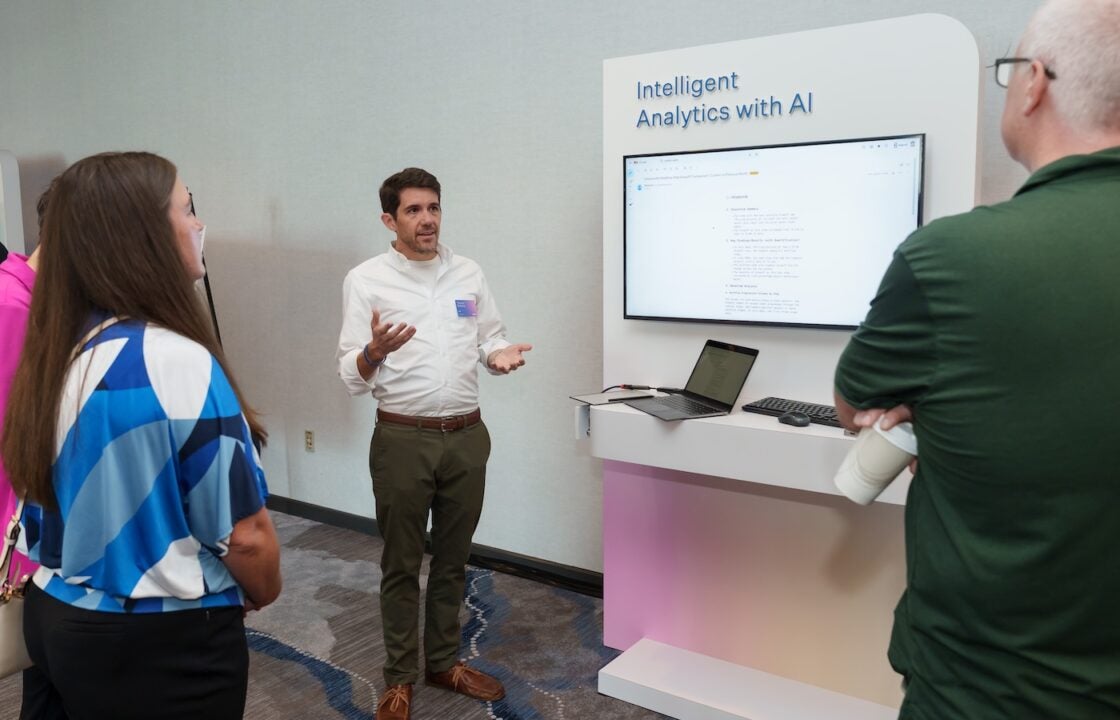October 9, 2025 in Thought leadership
10 Practical Lessons From The AI Think Tank: How Industry Leaders Are Putting AI To Work
The AI conversation in financial services has shifted. Banks, credit unions, and lenders have moved from asking “should we?” to rolling up their sleeves and figuring out “how do we make this work?”
We sat down with industry leaders to understand what’s actually happening behind the scenes. The reality is that success isn’t about flashy AI features or massive budgets. It’s about smart deployment, getting your people on board, and understanding that the technology is only half the battle.
Here’s what financial institutions are learning as they put AI to work—and how you can apply these lessons to move faster and smarter.

1. Win in the back office first, then expand
Smart teams target measurable bottlenecks where AI can prove itself quickly: quality control, post-closing operations, document processing, data cleanup. These areas give you repeatable work patterns, minimal regulatory risk, and clear before-and-after comparisons.
The payoff is immediate and measurable. You get real cost savings, cleaner processes, and the political capital to expand AI across your organization.
“We’re focusing on making our operations more efficient with AI before we put it in front of members,” an AI consultant who participated in our roundtable shared. “Our post-closing document work went from 50 minutes to 8 minutes.”
Start where you can measure success in minutes saved. Build credibility, then expand your scope.
2. Plan for people, not just technology
Rolling out AI without changing how people work just creates expensive redundancy. The AI will seem to take some of the grunt work away from your team, but it’s not impactful if they don’t trust the system to get it right. Your underwriters will “double-check” the automated income calculation. Your processors will re-verify what AI already verified. This “shadow work” increases costs, not reduces them.
Change management is a critical early step to ensure that your AI investments stick.
One of the participants shared: “We had our biggest skeptic help build the workflow. Now she’s our biggest advocate.” Since the skeptic was brought in from the beginning, given not only visibility but also agency in the build process, she had more trust in the outcome and was able to create a system that she was much more likely to harness.
The magic happens when you redesign roles, incentives, and accountability alongside the technology. Make your people co-creators, not victims of change. They’ll become your strongest champions.
3. Build safe sandboxes with clear guardrails
Most successful institutions follow the same playbook: let employees use AI internally with clear boundaries, keep humans accountable for outputs, and save customer-facing applications for later.
This approach lets you experiment without compliance headaches while building the audit trails regulators want to see.
“We locked everything down after some rogue use cases,” said one participant. “Now we’re opening it back up with proper governance—focusing on places where people are still accountable for what comes out.”
AI use cases are increasing by the month. Give your employees a safe way to explore them, and you’ll learn faster while staying compliant.
4. Go big on a few things, not small on everything
Once you start brainstorming, you’ll get hundreds of AI ideas. Most are distractions. In order to avoid the “shiny things” that AI has to offer, you have to be ruthless about discerning which AI tools or capabilities are going to make a real impact.
Leaders have shared that focusing on cross-functional capabilities that multiple teams can use—think document intake and data extraction—helps to deliver ROI that compounds, as well as simplifying implementation and security reviews.
The best approach is to build AI infrastructure, rather than adopting piecemeal AI features. This infrastructure gives you the ability to scale indefinitely.
5. Understand the economics before you scale
Here’s something most people don’t think about: AI usage directly impacts your bill. Every document uploaded, every question asked, every response generated costs money based on “tokens”—essentially, the amount of text processed.
A 2,000-page document upload could cost you millions of tokens. If ten employees upload similar documents, you’ve potentially blown through your monthly budget. Even saying “please” and “thank you” to the AI can add up, since every word costs you money.
“Compute isn’t infinite,” said a bank leader. ” You need to design for the new paradigm or costs triple.”
Set usage policies early and monitor consumption patterns to ensure that you’re not eating into the cost savings that AI efficiency affords you.
6. Mix and match: Build, buy, and boost
Teams are finding success by thinking in categories rather than individual use cases: internal builds for your unique workflows, vendor partnerships for specialized capabilities, and personal productivity tools for individual efficiency gains. “It’s not one ‘AI thing.’ It’s many little AI things–partner, internal, and personal assistants–that aggregate value,” noted a roundtable participant.
The key insight is that these three approaches solve different problems and require different governance. You don’t need to pick just one.
This isn’t about diversifying for diversification’s sake. It’s about matching the right approach to the right problem while keeping your overall strategy focused.
7. Clean your data house first
Decades of loan system data, constantly changing field definitions, and unknown connections between systems create problems for AI. Without a solid data foundation, it’s near-impossible to create efficient and effective AI workflows. Many teams’ first step is using AI itself to catalog and understand their own data before attempting more advanced applications.
“We’re using AI to make sense of our data first,” shared a CIO at a national lender. “We need to understand what we have before we can do anything sophisticated with it.”
Think of it as using AI to build the foundation for more AI. Clean, documented data multiplies everything else you do.
AI can help you prepare for AI. Start there if your data story is messy.
8. Regulators set the pace for customer-facing AI
Credit decisions, member interactions, and data privacy remain sensitive areas. Institutions are staying conservative on anything that touches fair lending, explainability, or customer data until regulatory guidance becomes clearer. Even AI notetakes are blocked by some vendors until clear regulation arises.
“I’m not touching AI credit decisions,” one participant admitted. “Not because I don’t think it would work, but because I don’t want to be the test case for how regulators react.”
Play it smart. Build your capabilities on internal operations first to develop governance muscles before you put AI in front of customers.
9. Developers become productivity multipliers
Many development teams are using AI for code review, documentation, system analysis, and legacy code understanding.
“Close to 100% of our developers use AI tools now,” an Engineering Manager at Blend reported. “It’s not optional anymore, it’s how work gets done.” And the productivity gains are measurable and immediate.
This enables faster deliveries and fewer defects, freeing up your technical team to focus on revenue-generating projects instead of maintenance work.
A bank leader shared another unexpected win: “We used AI to reverse-engineer old mainframe code and even proved to our cybersecurity team that we were meeting compliance requirements.”
Your technical teams are probably already there. Make it official and measure the impact by tracking ticket cycle times, change-fail rates, and rework. So next time you have to prove the value of your AI implementations, the numbers speak for themselves.
10. Trust comes from showing your work
For policy questions, successful teams limit AI to curated, approved documents and always show exactly where each answer comes from. Consistency builds confidence. Citations build trust.
So rather than the AI simply spitting out an answer, it can show you exactly which section of a guideline it’s referencing, giving you confidence in the output. Often, teams face the most hesitation to adopt AI because the “magic” seems to be hidden behind smoke and mirrors. A clear, transparent process brings the logic into view, helping you build trust and efficiency by eliminating second-guessing.
Your next moves
The institutions succeeding with AI share common patterns. They start with operations, invest in change management, and build governance alongside technology. They think in portfolios, not single solutions. They measure adoption as carefully as they measure technology performance.
Most importantly, they understand that AI isn’t about replacing people—it’s about making your people more effective, your processes more efficient, and your institution more competitive.
The question isn’t whether AI will change financial services. The question is whether you’ll be among the institutions leading that change or trying to catch up.

Ready to move faster? The path forward is clearer than you think.
Find out what we're up to!
Subscribe to get Blend news, customer stories, events, and industry insights.


